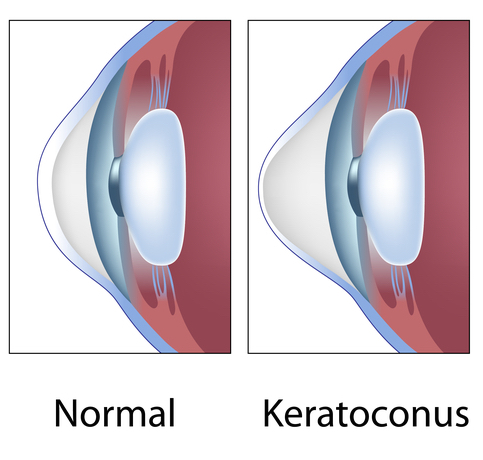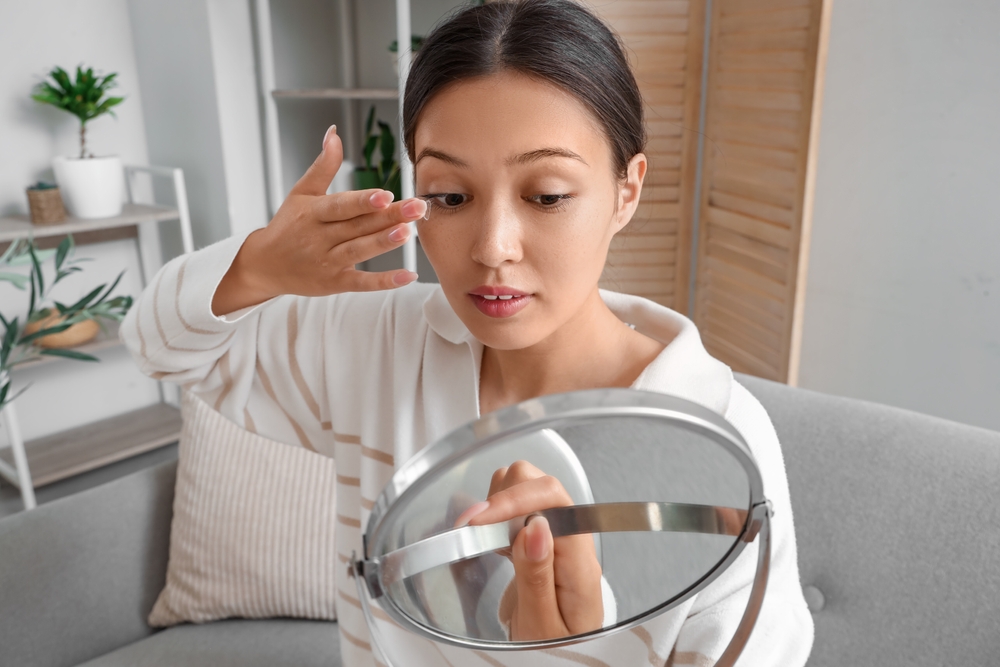Do you have keratoconus? Keratoconus is a condition that often affects adolescents and young adults.
It can be quite distressing to have your vision continue to worsen, especially while you’re still young. Treatment options for keratoconus are also somewhat limited.
One of the best ways to improve your vision if it’s been affected by keratoconus is with specialized contact lenses that help fit over your eye. However, a keratoconus treatment called corneal collagen cross-linking can prevent the condition from worsening.
Keep reading to learn about 5 ways corneal cross-linking could improve your quality of life!
1. Corneal Cross-Linking Can Stop the Progression of Keratoconus

Keratoconus is a progressive eye condition that begins in adolescence or early adulthood. It can progress for years, although it usually stops once you’re in your 30s.
The condition causes your cornea to bulge outward, giving your eye a more cone-like shape. The name closely mirrors this, as “kerato” means cornea and “conus” means cone.
As the cornea changes shape and protrudes out, it becomes more challenging to see. Minor irregularities in the cornea cause common refractive errors, like nearsightedness or farsightedness.
However, keratoconus causes much more extensive warping to the shape of the cornea. Because of this, there are more significant visual problems than refractive errors.
Scleral contact lenses are often used for patients with keratoconus. Once the cornea begins bulging out more, even scleral contact lenses will no longer be able to fit over it.
Corneal cross-linking is a treatment that can slow and even stop further bulging of the cornea. The treatment stops further changes to the shape of the cornea because it strengthens the cornea.
By stopping the progression of keratoconus, corneal cross-linking preserves your vision, ensuring you can still see!
2. Corneal Cross-Linking is a Minimally Invasive Procedure
Corneal cross-linking is a simple procedure with a short recovery period. You’ll receive numbing eye drops during the procedure to ensure you don’t feel any pain.
Next, the outer layer of your cornea, the epithelium, is then carefully removed. With the cornea exposed, liquid B2, riboflavin, is applied to the eye with an eye dropper.
Once saturated, a UV light delivery device is placed right over the eye. The UV light activates the riboflavin, which creates new bonds between the collagen fibers that make up the cornea.
With more bonds between fibers, it’s harder for the fibers to drift apart, which is what causes the cornea to change in shape. This is how corneal cross-linking prevents keratoconus from progressing further.
After the riboflavin in your eye is activated, the procedure is over. A bandage contact lens will be placed over the eye to protect your cornea as the epithelium regrows.
It only takes a week or two for this to occur. You may be given antibiotic and anti-inflammatory eye drops during that time to aid the healing process.
Undergoing corneal cross-linking won’t interfere with your life, thanks to a minimally invasive procedure and an easy recovery. You won’t have to take a lot of time off work and should only need about a week to ensure your eyes feel better.
Most patients can go back to work about a week after the procedure. There’s no need to put your life on hold if you need corneal cross-linking and want to stop the progression of keratoconus.
3. Corneal Cross-Linking Can Help You Keep Wearing the Contact Lenses that Work Best

Although there is no cure for keratoconus, corneal cross-linking can help stop its progression. However, it’s essential to know that it won’t reverse any vision loss due to keratoconus.
Because it can stop the progression of keratoconus, corneal cross-linking can prevent the cornea from changing shape. One of these benefits is that you’ll be able to keep wearing the contact lenses that work best at correcting your vision.
As your cornea’s shape continues to change, it means there are fewer contact lens choices able to fit over it. Soft lenses eventually won’t fit, and you’ll have to switch to rigid gas-permeable lenses.
Once those no longer fit, you’ll have to switch to scleral contact lenses. Scleral contact lenses are specially designed to create a smooth corneal surface, which is especially useful for patients with keratoconus.
Corneal cross-linking can help you keep wearing the contact lenses that work. Although there’s no guarantee that your cornea won’t change its shape after corneal cross-linking, it becomes far less likely to occur.
Undergoing corneal cross-linking earlier will make the most significant difference for keratoconus patients.
4. Corneal Cross-Linking Can Reduce Your Chances of Having a Corneal Transplant
If your cornea’s shape changes enough, contact lenses will no longer be able to correct your vision. If keratoconus becomes untreatable with methods like scleral contact lenses, a corneal transplant is the only option left to regain vision.
A corneal transplant is a procedure that replaces damaged tissue in the cornea with donor tissue. You may require either a partial or full corneal transplant, depending on the amount of damage to the cornea.
However, corneal cross-linking can help you keep your vision from worsening enough to need a corneal transplant.

5. Corneal Cross-Linking Can Help You Keep Your Vision
Keratoconus typically develops during adolescence, with progression stopping in your 30s. However, before this point, it can continue progressing to a point where your vision is no longer correctable.
Consider corneal cross-linking if you want to keep keratoconus from progressing further and preserve your remaining vision. The treatment can ensure you hold onto your vision for many years to come, rather than worrying about keratoconus continuing to progress.
Do you have keratoconus? Find out if you could be a good candidate for corneal cross-linking by requesting your appointment at Dell Laser Consultants in Austin, TX, today! Why wait any longer?





